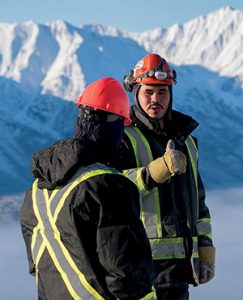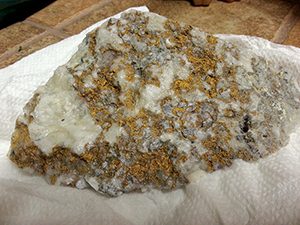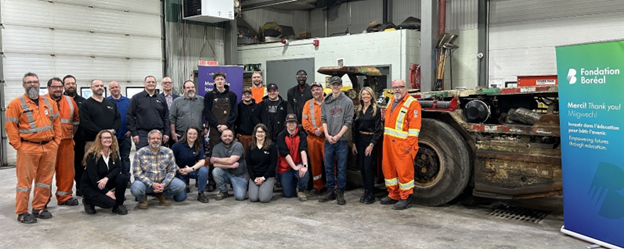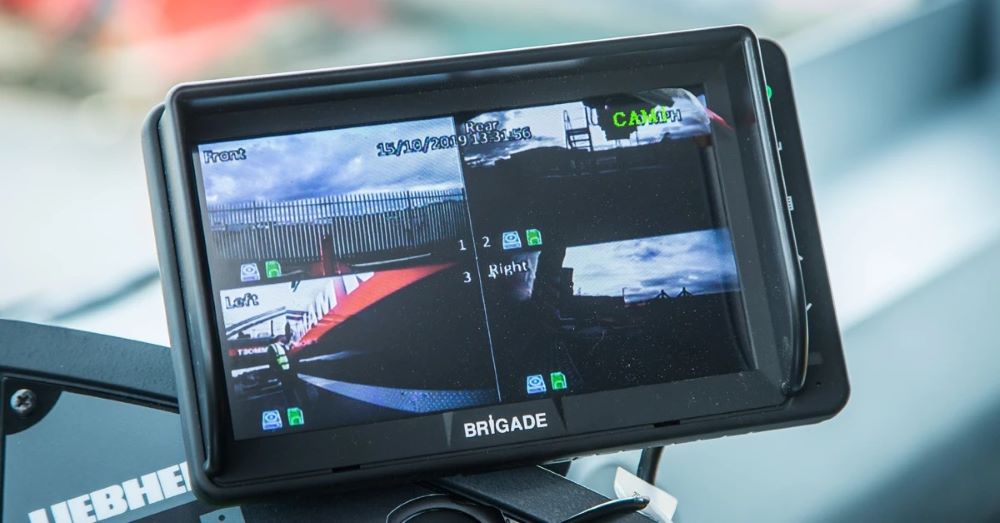High grades routine at Golden Predator’s 3 Aces exploration project
You don’t have to be a card player to recognized a lucky hand. That’s what Golden Predator Mining Corp. has been drilling at its 225 km², 3 Aces gold property, located in southeast Yukon. Hosting the two highest grade surface outcrops discovered to date in the Yukon and zone names such as Clubs, Hearts and Spades, the property keeps returning high grade assays as exploration continues.

The Northern Lights over the 3 Aces camp.
The property is located along the all-season Nahanni Range Road, which accesses the Cantung mine located 40 km to the north and is located in the traditional territory of the Kaska Nation.
The mineralization at 3 Aces has many characteristics consistent with an orogenic vein system including quartz veins with coarse visible gold and low (<1%) sulphide content. The property is hosted within the Selwyn Basin; rocks that were previously part of an ancient ocean basin and shelf that existed off the coast of North America over 500 million years ago. Plate tectonics have folded, faulted and contracted the Selwyn Basin starting about 150 million years ago and that process has led to the formation of many types of mineral deposits. Yukon is well known for intrusive related gold deposits such as the Brewery Creek Mine or Fort Knox in Alaska however the gold bearing sedimentary rocks and the property lacks significant intrusive rocks.

Trevor Magun (facing camera) and Victor Kisoun, both Kaska citizens working at 3 Aces.
Coarse gold in quartz veins at surface were initially discovered in 2009 by a local prospector Alex McMillan. Northern Tiger Resources initially held the property, but in 2014 it was taken over by Golden Predator. The project was advanced with extensive soil sampling by the previous operator. Significant gold-in-soil anomalies were outlined over a central core area of 10.5 km2 leading to limited helicopter supported core drilling.
Golden Predator’s initial work commenced in 2015 with metallurgical studies, rotary air blast (RAB) drilling, reverse circulation (RC) drilling, and bulk sampling. All were focused on establishing the grade and continuity of the Ace of Spades vein where several earlier core holes had intersected the vein but returned lower than expected grades. This work confirmed the high grades of the vein by utilizing a more rigorous sampling protocol and closer drill hole spacing.

Outcropping sample from the Ace of Hearts deposit.
A greatly expanded and accelerated work program commenced in August 2016 including airborne geophysics, soil sampling, trenching, geological mapping and sampling, road construction and installation of a bridge over the Little Hyland River to allow heavier equipment, year round drilling and a cost savings by eliminating helicopter supported activities.
The 3 Aces drill program is targeted to complete approximately 4,500 metres of 140-mm-diameter drilling and PQ core drilling in the fourth quarter of 2016.
Drilling, which commenced in October, has through Dec. 13, 2016 completed 55 drill holes for more than 4,250 metres with all but three holes reaching their targeted depths. Currently the combination of core and reverse circulation drill program is designed to test high grade mineralization within a number of quartz veins exposed in trenches across the Spades, Hearts and Clubs areas.
Drilling will resume in February 2017 with more than 25,000 metres planned. The 2017 program will continue to delineate and expand known mineralization in the numerous veins discovered to date across the expansive property.
A seasoned team
It takes a team of seasoned geologists to move a project forward at the fast pace now being set at Golden Predator. The exploration team is led by William Sheriff and includes a team of contractors and employees which bring a collective of 200+ years of experience to the project. Jeff Cary as project geologist, Mark Shutty who manages the resource modelling, and Mike Burke as chief geologist round out the team. This talented team brings an old fashioned model of exploration to the project using practical “boots on the ground” exploration through soil sampling to identify anomalies for trenching. Trenching results then put drill targets on the map with bulk sampling to follow to reconcile drill results with actual performance.
To date over 25 mineralized veins have been discovered through sampling, trenching and roadwork. Metallurgical results from bulk sampling confirm independent lab testing by SGS Mineral Services indicating approximately 80% gravity recovery.
In January 2013, Golden Predator signed an exploration agreement with the Kaska Nation, as represented by the Ross River Dena Council and the Liard First Nation.
Working closely with the Kaska Nation is of paramount importance to Golden Predator to ensure that the community realizes the opportunity of training, employment, contracts and business development. First Nation relations is led by the chief executive officer, Janet Lee-Sheriff, and while the company has an memorandum of exploration for exploration, Golden Predator is working on ways to exceed the requirements of the agreement by identifying business opportunities and the opportunity to create wealth in the community outside the agreement. “Bringing the community along with us” is the foundation of Golden Predator’s activities.
While in the early stages, Golden Predator sees nothing to limit blue sky potential, and is optimistic that the numerous high grade veins and large untested area of the 3 Aces property will lead to an emerging new district.





Comments